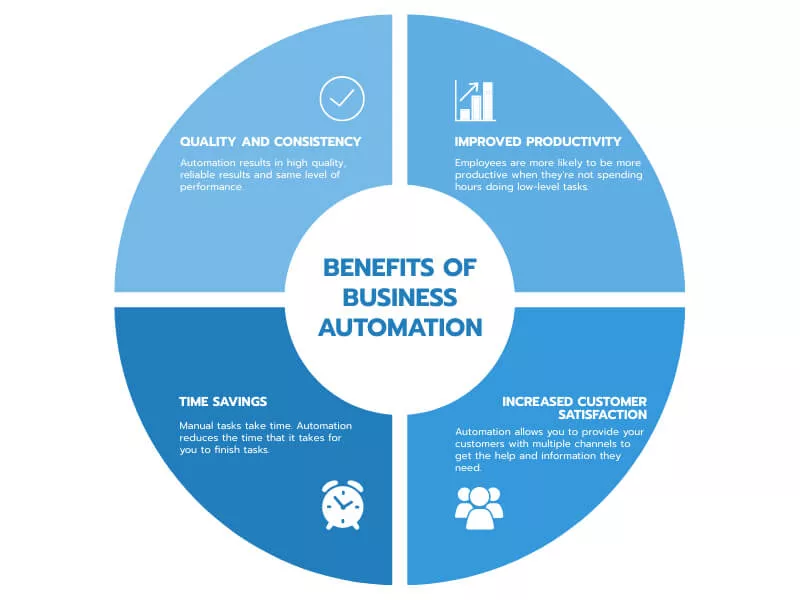Six Stages of Strategic IT Management
Business is all about planning, execution, and management. It is much like a road trip around our great southern land, you can’t just start your journey without having finalised the destination. The path you take is your planned roadmap. The final destination is your goal. This is strategising at its best. Knowing where to reach, how to go about it and actually doing it is not the end of the journey. It is just the beginning. What comes after this is strategic management.
What Is Strategic Management?
Strategic Management is the incessant planning, monitoring, analysis and assessment of all that is essential for an organisation to meet its goals and objectives. It is all about creating strategies which the managers carry out to achieve enhanced performance.
Why Strategic IT Management
If you are reading this post you already know how essential IT is to any business. Keeping that in mind, it becomes mandatory to know the threats, loopholes, and weaknesses that exist in your IT setup. Strategic IT management helps to bring these to light. This process also assists the business in becoming more streamlined and disciplined.
6 Stages Of Strategic IT Management
 Stage 1 – Working Out The Core Strategy – This is the stage where all the demands imposed on the IT by the business, corporate, and functional levels are identified. It is basically the recognition of needs that IT has to fulfil. Corporate directions will show the way to business managers to will then formulate and apply strategic action plans. The action plans will have to be a reflection of the corporate performance objectives.
Stage 1 – Working Out The Core Strategy – This is the stage where all the demands imposed on the IT by the business, corporate, and functional levels are identified. It is basically the recognition of needs that IT has to fulfil. Corporate directions will show the way to business managers to will then formulate and apply strategic action plans. The action plans will have to be a reflection of the corporate performance objectives.
At any level, there will be certain demands on IT which will be universal in nature. Then again, there will be quite a few which will be specific to different functional levels. Working out the core strategy will drive focus on the strategic IT units. From here on IT will have its work cut out. Strategic management will allow them to recognise each need accurately and serve them flawlessly through proper planning and execution.
Stage 2 – External Analysis – The business environment is constantly changing due to new and evolving technology. Because of this, it is necessary to explore the dangers and benefits that these changes pose and if they give rise to any new opportunities to exploit. Managers study their current IT infrastructure to gauge how they can make the best use of technological advancements. External analysis begins with the gathering of information in relation to IT products. It vendors are the best source of this information. Once you are armed with the knowledge, it is time to study the effect of the technologies on the industry structure. There are various methodologies to help you carry out this task. Some of the most popular ones are:
- Implementing a competitive analysis framework to see if technology can change the industry’s competition.
- Using a strategic grid concept to study the strategic impact of IT in the organisation.
- Find a strategic thrust matrix that helps to search out strategic opportunities.
- Looking at the customer resource lifecycle to find out the opportunities for using technologies.
- Setting up of inter-organisational systems as a hotspot for strategic IT application.
This is, however, not the end of the external analysis. You now have to study the technology that your competitors are using. This is necessary not to gain a competitive edge over them but to ensure that they don’t run you out of the business.
Stage 3 – Internal Analysis – At this point, the organisation takes stock of its current competitive standing in the market in relation to that of its competitors. For this, they first need to evaluate their IT platform which usually consists of hardware & software, databases, and telecommunication technologies. The evaluation is done in terms of resources, its ability to meet the user requirements and how it performs in comparison to the platform used by the competition.
By doing this it will help you identify the areas where further improvement is required. Strategic IT management at this stage would mean fully automating processes or re-engineering the IT products. It may so happen, but to get a competitive advantage you may have to bring some changes to the “Core Strategy”, which may either lead to product or service improvement, or a completely new product.
Stage 4 – Formulation and Appraisal Of Strategy – Before introducing any changes it is best to supplement the findings through substantive data. Managers can take use these tests to get hold of valuable information:
- Strategic Consistency Test to ensure that all the projects are responding to the corporate, business as well as functional requirements.
- Technical Coherence Test will validate whether or not the IT projects are grouped logically into technically viable information systems.
- Project Risk Test will aid in evaluating the risk of each independent IT project and the overall risk of the entire IT strategic plan.
Once you have the actual data, you can then formulate a better IT strategy. The next step is to consider other linked issues like sourcing and timing. At this stage, the appraisal of horizontal and vertical strategy also becomes necessary.
 Stage 5 – Review Of Financial Needs – Strategic IT management is not just about brainstorming and executing. Yes, it does involve those, but what it all boils down to is money. The biggest questions that need answering at this stage is working out what is more appropriate. This could range from asking yourself questions such as to internally develop the IT, internally develop with outside help, or, outsource the work. To arrive at the best answer you will have to do an evaluation of areas such as your internal capacities, the degree of dependency on suppliers, and the associated risks and costs involved.
Stage 5 – Review Of Financial Needs – Strategic IT management is not just about brainstorming and executing. Yes, it does involve those, but what it all boils down to is money. The biggest questions that need answering at this stage is working out what is more appropriate. This could range from asking yourself questions such as to internally develop the IT, internally develop with outside help, or, outsource the work. To arrive at the best answer you will have to do an evaluation of areas such as your internal capacities, the degree of dependency on suppliers, and the associated risks and costs involved.
Next is timing. When it comes to technology, it can be like the Melbourne Cup. The first one to jump is not always the winner. Sometimes, it is best to let the others perfect it bore you jump in for a piece of the pie. Sourcing and timing are questions to be dealt with only when you have a clear financial picture in front of you.
Stage 6 – Internalisation Of Strategy – Strategic IT management is not just purely about applying analytical effort. It needs to also be accepted and internalised by the organisation. Failure to do so will make the entire exercise of IT management a big old mistake. Allocation of tasks and responsibilities to the concerned IT group(s) will have to be adjusted for maximising responsiveness. It may also bring about changes in the internal management procedures. By adopting formal analytical and cultural and behavioural approaches, internalisation can be achieved quite easily and successfully. By internalising the strategy it will help bring about the required organisational and individual commitment modifications, which will hopefully lead to a fruitful outcome.
Closing Lines
If you want your firm’s IT strategy to be in sync with your organisational goals, strategic IT management is the answer. A system linked to long-term drivers is the only way to guarantee success and that is exactly what strategic management does. It helps in strengthening the firm’s competitive standing and face the ever-changing technological environment.











